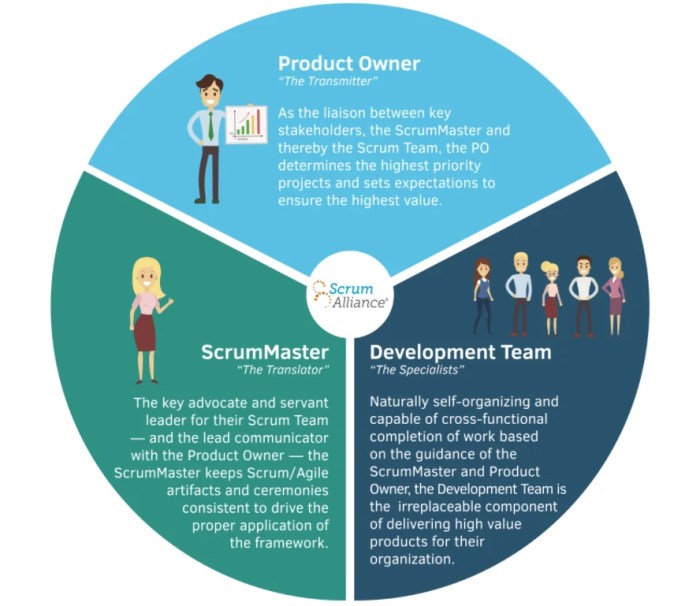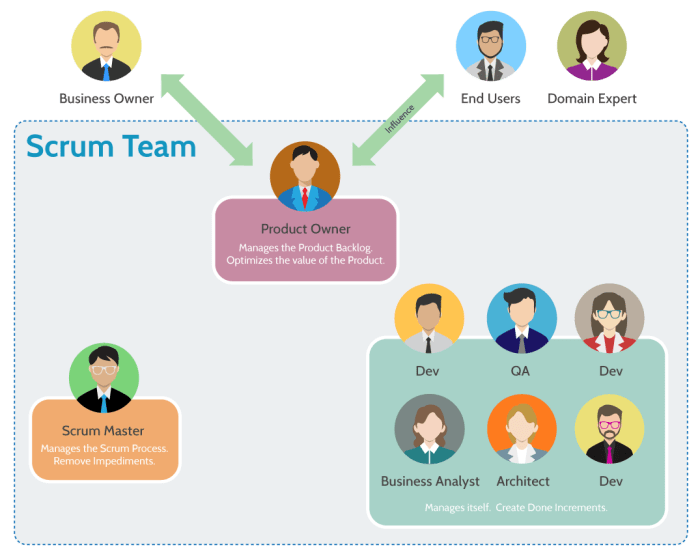The scrum master wants to establish a team’s initial velocity – As the Scrum Master embarks on the critical task of establishing a team’s initial velocity, this discourse delves into the intricacies of this process, exploring the significance of historical data, the impact of team dynamics, and the role of effective communication in optimizing velocity.
Understanding the concept of team velocity and its measurement techniques is paramount. This article provides a comprehensive overview of the factors influencing velocity, including team size, experience, and work complexity. By examining best practices for setting benchmarks and refining velocity over time, teams can harness this metric to enhance their performance and achieve project success.
Team Velocity Establishment

Team velocity is a measure of the amount of work a team can complete in a given sprint. It is an important metric in Scrum because it helps teams to plan and track their progress, and to identify areas for improvement.
The Scrum Master plays a key role in establishing the team’s initial velocity.
To establish the team’s initial velocity, the Scrum Master should first collect data on the team’s past performance. This data can be used to create a baseline against which the team’s current performance can be compared. The Scrum Master should also consider the team’s size, experience, and work complexity when establishing the initial velocity.
Velocity Measurement
There are a number of different methods for measuring team velocity. One common method is to use story points. Story points are a unit of measure that represents the amount of work required to complete a user story. Another method is to use function points.
Function points are a unit of measure that represents the amount of functionality delivered by a software system.
Once the team has selected a method for measuring velocity, they should track their progress over time. This data can be used to identify trends and to make adjustments to the team’s velocity as needed.
Historical Data and Benchmarks
When establishing the team’s initial velocity, it is important to consider historical data. This data can help the team to identify trends and to set realistic expectations for the future. The team should also consider industry benchmarks when setting their initial velocity.
Best practices for setting benchmarks include:
- Using data from similar teams
- Considering the team’s size, experience, and work complexity
- Setting realistic goals
Factors Influencing Velocity
A number of factors can impact team velocity, including:
- Team size
- Team experience
- Work complexity
- Team collaboration and communication
- Tools and techniques
The team should be aware of these factors and take them into account when estimating their velocity.
Team Collaboration and Communication, The scrum master wants to establish a team’s initial velocity
Team collaboration and communication are essential for high velocity. Teams that collaborate effectively and communicate openly are more likely to be successful. The Scrum Master can help to foster effective collaboration and communication by:
- Creating a positive and supportive team environment
- Encouraging open communication
- Facilitating team meetings
- Providing coaching and support
Tools and Techniques
There are a number of tools and techniques that can help teams to track and manage their velocity. These tools can help to improve visibility and to make velocity estimation more accurate.
Some of the most popular tools and techniques include:
- Velocity charts
- Burn-down charts
- Scrum boards
- Velocity calculators
Velocity Refinement
Team velocity is not a static number. It should be refined over time as the team learns more about its own capabilities. The Scrum Master should work with the team to refine its velocity regularly.
The team should consider the following factors when refining its velocity:
- Historical data
- Current performance
- Changing circumstances
Velocity and Sprint Planning
Team velocity is an important input to sprint planning. The team should use its velocity to set realistic sprint goals. The Scrum Master can help the team to use its velocity effectively by:
- Facilitating sprint planning meetings
- Providing guidance on how to set realistic sprint goals
- Tracking the team’s progress during the sprint
FAQ Compilation: The Scrum Master Wants To Establish A Team’s Initial Velocity
What is the significance of historical data in establishing team velocity?
Historical data provides valuable insights into a team’s past performance, enabling the Scrum Master to set realistic velocity benchmarks and identify areas for improvement.
How does team collaboration impact velocity?
Effective collaboration and communication foster a cohesive team environment, reducing misunderstandings and streamlining workflows, ultimately leading to increased velocity.
What tools and techniques can be used to track team velocity?
Various tools, such as burndown charts and velocity tracking software, provide real-time visibility into team progress and facilitate data-driven decision-making.

